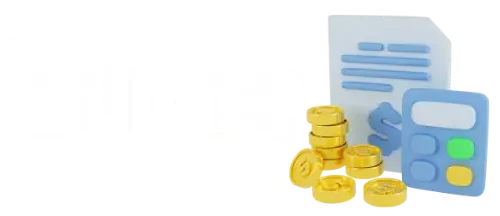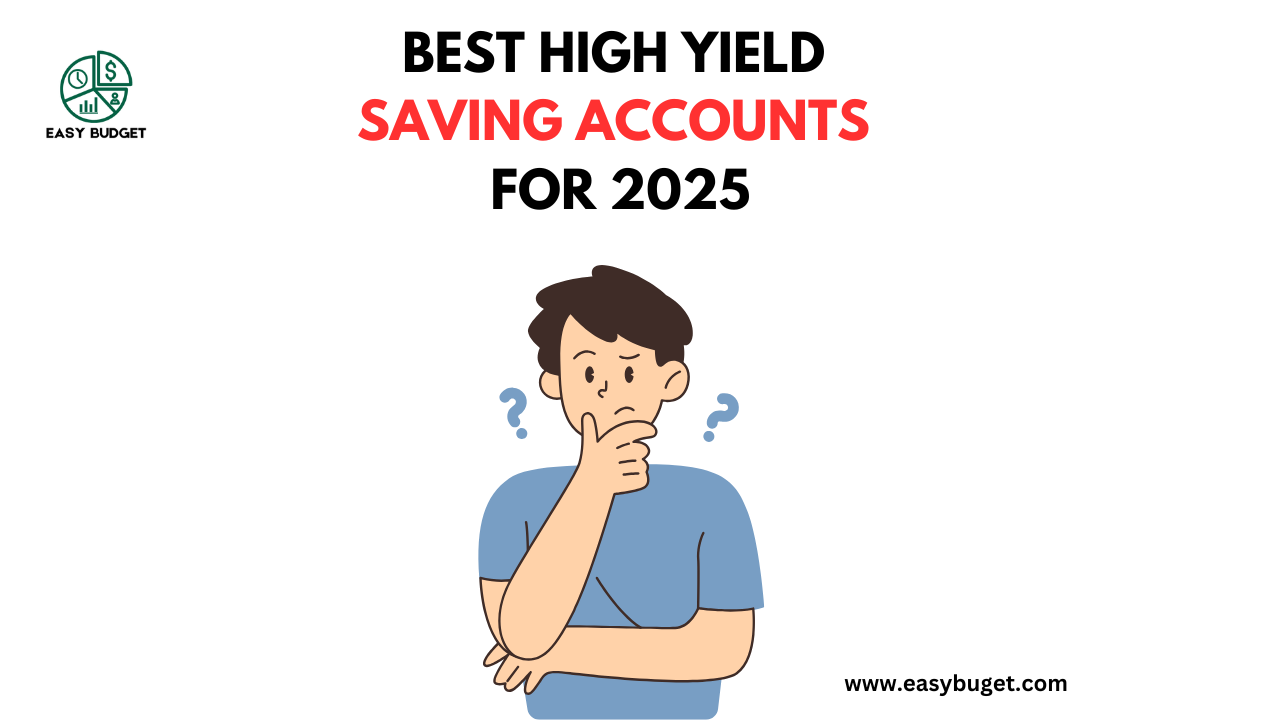Introduction
Did you know that high yield savings accounts can earn you 10x more interest than traditional savings accounts? While the average bank offers a measly 0.01% APY, high-yield accounts in 2025 are delivering 5-6% or more. That means a 10,000 deposit could earn you 600 in a year—without lifting a finger.
In this guide, we’ll break down everything you need to know about high-yield savings accounts, including:
- What they are and how they work.
- The best accounts for 2025.
- Tips to maximize your savings and avoid common pitfalls.
Let’s dive in and start growing your money!
What is a High Yield Savings Account?
A high yield savings account is a type of savings account that offers significantly higher interest rates (APYs) than traditional savings accounts. These accounts are typically offered by online banks, which have lower overhead costs and can pass the savings on to you.
Key Features:
- Higher APYs: Earn 5-6% interest compared to 0.01% at traditional banks.
- FDIC Insurance: Your money is protected up to $250,000 per account.
- No or Low Fees: Many accounts have no monthly maintenance fees.
Benefits of High Yield Savings Accounts
Why should you open a high-yield savings account? Here are the top benefits:
- Higher Interest Earnings: Grow your savings faster with competitive APYs.
- Safety: FDIC insurance protects your money up to $250,000.
- Liquidity: Access your funds anytime for emergencies or opportunities.
- Low Risk: Unlike stocks or real estate, savings accounts are risk-free.
Pro Tip: Use a high-yield savings account for your emergency fund or short-term savings goals (e.g., a vacation or down payment).
How High Yield Savings Accounts Work
High-yield savings accounts work just like traditional savings accounts, but with one key difference: higher interest rates. Here’s how they operate:
- Interest Calculation: Interest is compounded daily and paid monthly.
- APY vs. Interest Rate: APY includes compounding, giving you a more accurate picture of earnings.
Resource: Use Bankrate’s savings calculator to estimate your earnings.
Top High-Yield Savings Accounts for 2025
Here are the best high-yield savings accounts to consider in 2025:
- Ally Bank:
- APY: 5.25%
- Why: No monthly fees, 24/7 customer support, and a user-friendly app.
- Marcus by Goldman Sachs:
- APY: 5.40%
- Why: No fees, easy-to-use platform, and strong customer service.
- Discover Bank:
- APY: 5.30%
- Why: No fees, excellent customer service, and a robust mobile app.
- American Express National Bank:
- APY: 5.35%
- Why: Trusted brand, no fees, and easy online access.
- CIT Bank:
- APY: 5.50%
- Why: Competitive rates and no monthly fees.
Pro Tip: Compare rates and features using tools like NerdWallet or Bankrate.
How to Choose the Best High Yield Savings Account
Not all high yield savings accounts are created equal. Here’s how to pick the right one for you:
- Compare APYs: Look for the highest rate to maximize earnings.
- Check Fees: Avoid accounts with monthly maintenance fees.
- Evaluate Accessibility: Ensure easy access to funds via online banking or mobile apps.
- Read Reviews: Check customer feedback for reliability and service quality.
- Consider Minimum Balance Requirements: Some accounts require a minimum deposit to earn the advertised APY.
How to Open a High Yield Savings Account
Ready to open an account? Follow these steps:
- Research: Compare accounts using tools like NerdWallet or Bankrate.
- Gather Documents: Have your ID, Social Security number, and funding source ready.
- Apply Online: Most banks offer a simple online application process.
- Fund Your Account: Transfer money from your current bank account.
Example: Opening an account with Ally Bank takes less than 10 minutes and requires no minimum deposit.
Tips for Maximizing Your Savings
Once you’ve opened your account, use these strategies to grow your savings faster:
- Automate Savings: Set up automatic transfers to grow your balance consistently.
- Avoid Withdrawals: Minimize withdrawals to maximize interest earnings.
- Ladder Your Savings: Use multiple accounts for different goals (e.g., emergency fund, vacation fund).
- Monitor Rates: Interest rates can change; switch accounts if you find a better rate.
Pro Tip: Use apps like YNAB to track your savings goals and progress.
Common Myths About High Yield Savings Accounts
Let’s bust some myths:
- Myth: “You need a lot of money to open an account.”
Truth: Many accounts have no minimum deposit requirements. - Myth: “Online banks are unsafe.”
Truth: FDIC insurance protects your money, just like at traditional banks. - Myth: “High-yield savings accounts are only for the wealthy.”
Truth: Anyone can benefit from higher interest rates, regardless of income.
Best International High Yield Savings Accounts
Examples: HSBC, Barclays, and other global banks offering competitive rates.
Why: Diversify your savings across currencies and regions.
Explanation:
International high yield savings accounts allow you to save money in foreign currencies or with global banks that offer competitive interest rates. For example:
- HSBC offers multi-currency savings accounts, allowing you to hold funds in USD, EUR, GBP, and more.
- Barclays provides international savings options with competitive APYs for expats and global citizens.
Why This Matters:
- Diversification: Holding savings in multiple currencies can protect against currency fluctuations.
- Global Opportunities: If you live or work abroad, these accounts make it easier to manage your finances.
- Higher Rates: Some international banks offer better rates than domestic ones, especially in emerging markets.
Best High Yield Savings Accounts for Kids
Examples: Capital One Kids Savings Account, Alliant Credit Union Youth Savings.
Why: Teach children about saving while earning higher interest.
Explanation:
High yield savings accounts for kids are designed to help children learn about money management while earning competitive interest rates. Examples include:
- Capital One Kids Savings Account: Offers a high APY with no fees and a user-friendly app for parents and kids.
- Alliant Credit Union Youth Savings: Provides a high APY and tools to teach kids about saving and budgeting.
Why This Matters:
- Financial Education: These accounts help kids understand the value of saving and compound interest.
- Higher Earnings: Kids can earn more interest than with traditional savings accounts.
- Parental Control: Parents can monitor and manage the account until the child reaches adulthood.
3. Tax Implications of High Yield Savings Accounts
Interest is Taxable: Report interest earnings on your tax return.
Strategies to Minimize Taxes: Use tax-advantaged accounts like IRAs for long-term savings.
Explanation:
While high yield savings accounts offer great returns, the interest you earn is considered taxable income. Here’s what you need to know:
- Tax Reporting: You’ll receive a 1099-INT form from your bank, which you must report on your tax return.
- Tax Rates: Interest is taxed at your ordinary income tax rate, which can be as high as 37% depending on your bracket.
Strategies to Minimize Taxes:
- Use Tax-Advantaged Accounts: Contribute to an IRA or Health Savings Account (HSA) to earn tax-free or tax-deferred interest.
- Invest in Municipal Bonds: Interest from municipal bonds is often exempt from federal taxes.
- Spread Out Earnings: If you’re nearing a higher tax bracket, consider spreading out large deposits to avoid bumping up your tax rate.
4. Alternatives to High Yield Savings Accounts
Certificates of Deposit (CDs): Higher rates for locking in your money.
Money Market Accounts: Combine checking and savings features with higher rates.
Treasury Bills: Government-backed securities with competitive yields.
Explanation:
While high yield savings accounts are great, they’re not the only option for earning interest. Here are some alternatives:
- Certificates of Deposit (CDs):
- How They Work: You deposit money for a fixed term (e.g., 6 months, 1 year, 5 years) and earn a guaranteed interest rate.
- Pros: Higher APYs than savings accounts; FDIC-insured.
- Cons: Penalties for early withdrawal; less liquidity.
- Money Market Accounts:
- How They Work: These accounts combine features of checking and savings accounts, offering higher APYs and limited check-writing abilities.
- Pros: Higher rates than traditional savings; easy access to funds.
- Cons: May require higher minimum balances.
- Treasury Bills (T-Bills):
- How They Work: Short-term government securities with maturities ranging from a few days to one year.
- Pros: Backed by the U.S. government; competitive yields.
- Cons: Less liquid than savings accounts; interest is subject to federal taxes.
Why This Matters:
Flexibility: Money market accounts provide easy access to funds while earning interest.
Diversification: Using a mix of savings vehicles can optimize your returns and liquidity.
Higher Returns: CDs and T-Bills often offer higher rates than savings accounts.
FAQs About High Yield Savings Accounts
- Q: Are high yield savings accounts safe?
A: Yes, they are FDIC-insured up to $250,000 per account. - Q: Can I lose money in a high-yield savings account?
A: No, your principal is protected, and you earn interest. - Q: How often do interest rates change?
A: Rates can change based on the Federal Reserve’s decisions and market conditions.
Conclusion
High yield savings accounts are a simple yet powerful tool for growing your money. With higher interest rates, safety, and easy access to funds, they’re a smart choice for anyone looking to build wealth without taking on risk.
Ready to get started? Compare accounts today and open one that fits your financial goals. For more tips on managing your money, check out our guide: How to Build an Emergency Fund.
Please subscribe Easy Budget to stay updated about our latest blogs!


5 thoughts on “Best High Yield Savings Accounts: The Ultimate Guide for 2025”